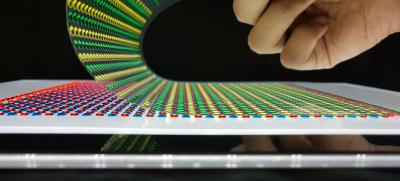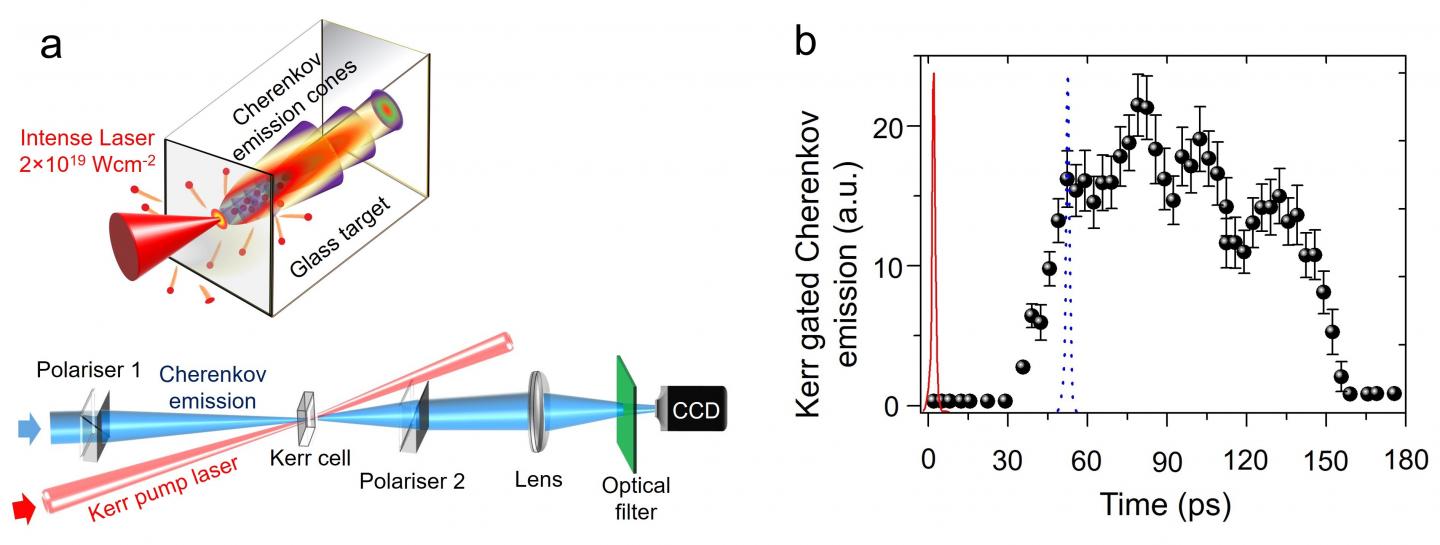
Electric Eel-Inspired Device Reaches 110 Volts: This photo depicts the printed, high voltage implementation of the artificial electric organ. A 3-D bioprinter was used to deposit arrays of gel precursor droplets onto plastic substrates, which were then cured with a UV light to convert them into solid gels. Alternating high-salinity and low-salinity gels (red and blue gels, respectively) were printed onto one substrate, and alternating cation-selective and anion-selective gels (green and yellow gels, respectively) were printed onto a second substrate. When overlaid, these gels connect to form a conductive pathway of 612 tetrameric gel cells that can be used to generate up to 110 volts.

The table-top laser experiment at the Tata Institute of Fundamental Research, Mumbai. (a) A high power laser pulse creates mega-ampere electron current pulses. Cherenkov emission in the form of cones is emitted by these electrons traveling faster than light in glass. (b) the time trace of the Cherenkov emission measured in the experiment.